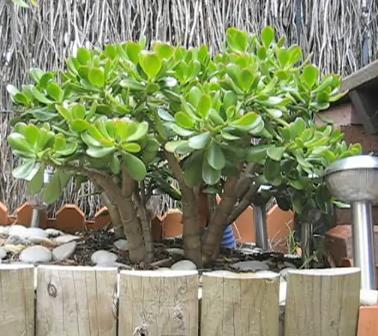Feng Shui Plants
In feng shui, plants play an important role because they help to keep the air fresh and bring a life force into our home. Healthy houseplants are good and beneficial, especially bamboos and wooded houseplants. Being the only element amongst the five elements hat has life, you should never allow plants to grow wild or unchecked.
Sick plants and those which shed flowers and leaves profusely will create stagnant chi. Trim your plants regularly, overgrown plants may create overwhelming energy. Cut flowers, dried flowers and other dying plants are also not recommended but you can use pictures of flowers or brightly wooden replicas and silk flowers as an alternative to symbolize growth and stimulate energy in your house.
In feng shui, wood represents birth, regeneration, creativity, the east and the spring. One of the main puposes of using houseplants in feng shui is to disguise harsh angles or other elements so that sha chi or a stagnant flow of energy can be reduced or prevented. Slopes ceilings, corners and other sharp lines can create sha chi or bad energy in your home and one of the most popular and common ways to solve these problems is to use plants in these areas in order to disguise the architectural features so that the air can flow freely between rooms and through ‘dead’ spaces.
|
|
Other purposes of using plants in feng shui are to bring life into our house, harmonize water and fire energy in the kitchen, slow down qi or chi in corridor, move energy in a recessed corner, drain excess water energy in the bathroom, as well as to enhance the southeast and east and support the south area of our house.

Plants also create different types of feng shui energy, depending on their shape. Upright plants with pointed leaves are yang and they are often placed in the south whereas round-leaved and drooping plants are more yin and are therefore placed in the north. Colors are also important as they represent elements in feng shui.
For example; Fire element is represented by red-color plant such as poinsettia, begonia, cordyline, bromeliad, geranium and aspidistra. Metal can be represented by jasmine, money plant, calathea, oleander and fittonia. Earth element by marigold, sunflowers, slipper flower, whereas Water element can be introduced bby standing plant pots on blue or clear glass nuggets. All plants are representative of the Wood element. One of the highly sought feng shui plants are those with colors and shapes that correspond to the Chinese Five Elements.
 |
 |
Money plant, Crassula ovata, has been adopted as Feng Shui plant because its circular leaves resemble coins and metal energy. |
Thorny plants should not be placed near your front door. Make sure also that they are not directing their harmful energy towards the chair where you are sitting. For those who are married and want children, avoid placing flowers in your bedroom, place a basket of fruits (especially pomegranates) instead to symbolize fertility. Bonsai plants could represent stunted growth and are therefore avoided by many feng shui practitioners.
Recommended places to locate good feng shui plants are in the east, south and southeast of your bagua area. When placed in the north, they can weaken the water element of the area, so you should avoid placing too many plants in the north. The same applies to northeast, west and southwest.
Here are some popular plants used in feng shui:
Bamboo, palms, dracaena, jade plants or also known as money plants, peace lilies, ficus species and hanging plants.
Copyright © 2009 Game Frog
Home | Contact | Disclaimer | Privacy Policy